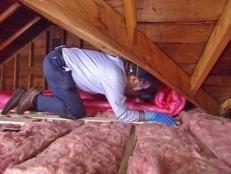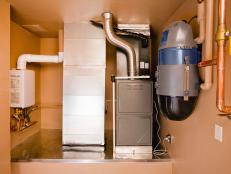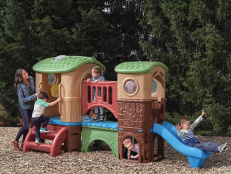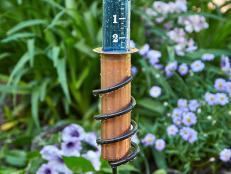Energy Answers: The Reason for Retrofitting
Throughout his life as a carpenter, Jeff Wilson has been making plans for the ideal energy efficient home.
He's been designing solutions for years — since childhood, actually. His inspiration was born with the green childhood home his father and great-grandfather built.
"I was always trying to keep up on what was happening in the field of efficiency and alternative energy," he says, noting that he explored earth-sheltered concrete homes, straw-bale homes, rammed earth, timber frame and even "Earthships" made of old tires.
What made the most sense to Jeff, and what's reasonable for most people, is to simply fix what's broken.
Specifically, Jeff set out to perform a Deep Energy Retrofit (DER). This process goes beyond weatherization, changing out light bulbs and turning down the thermostat. (Though these actions are certainly a good place to start.)
A DER is a holistic approach to greening a home. It's not a one-size-fits-all cure for the leaky house. Instead, it involves customizing a plan to address lost energy through the building envelope, doors and windows, heating and cooling, water heating, lighting and appliances. It includes indoor air quality and home energy production. It's basically a grand, green plan to make a home run as lean and mean as possible.
Jeff's priority was to use off-the-shelf materials that are accessible to every homeowner to show that a DER, while sounding quite scientific, is an accessible endeavor for the everyman. And it's more affordable than continuing to pay exorbitant energy bills. (Jeff's bills averaged $150 a month. But keep in mind his home is less than half the size of an average 2,500-square-foot American home.)
Motivated By a Higher Purpose
Jeff says the country suffers from "energy obesity," resulting from years of ignoring our energy consumption and inattention to efficiency. Now we are dealing with harsh energy price swings. We must depend on unstable regions of the world for our energy. We are fighting a depressed economy, and the best antidote for all this, according to Jeff, is energy efficiency.
Jeff is a voracious reader, and when he came across a report in Architecture2010 using Energy Information Administration data, the information spurred his home retrofit project. The report compared what we might spend to generate new energy from three sources: "clean" coal, new nuclear plants and building efficiency. Statistics showed that home efficiency cost one-sixth the price of clean coal, and one-fifth the cost of new nuclear energy. Improving home energy efficiency only requires one-third the cost of today's cheapest, dirtiest form of coal energy.
"If you want to generate jobs, don't build another coal plant; spend the money retrofitting homes," Jeff says. "I see a huge opportunity for individuals to save money, and I see a huge opportunity for the country from a business standpoint."
So three years ago, Jeff began writing a book about efficiency, and he took on the ambitious project of retrofitting his home so it wouldn't waste energy. Why? Because there's no better time than now to begin this process, he asserts. Make efficiency improvements now, because what family couldn't use the extra money wasted on energy bills? Do it now, when the economy needs new types of jobs, such as green construction.
"If not now, then when?" Jeff asks. "It's all well and good to talk about energy efficiency, and to rant and rave about how bad things are, but it's quite another to become part of the solution."
Getting Started
So, how do you get started on a DER? Rather than diving into a home-insulation project or using vacation money to replace windows immediately, slow down and make a plan.
Jeff advises an energy audit to determine the top priorities that will deliver the most efficiency and best return on investment. Take on energy efficiency projects as your budget allows, and work according to your plan. "There are a lot of half-measures that may seem like they help, but what we really need are long-term solutions," he explains.
The energy audit is Step 1 to greening your home.






































